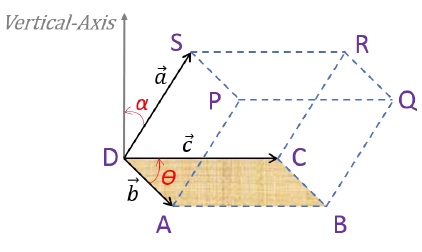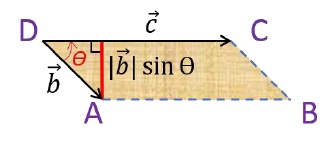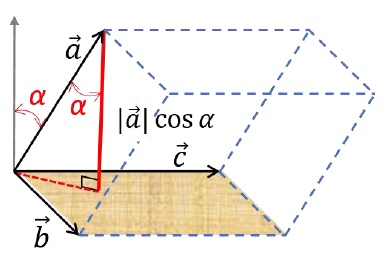Vectors Problem Example 6
Description:
Problem
Show that a→.(b→ × c→) is equal in magnitude to the volume of the parallelepiped formed on the three vectors, a→, b→ and c→.
Solution
Visualizing the resulting parallelepiped −

The base is shaded with brown for better contrast.
a→ makes an angle of 𝛼 with the Vertical axis. (which can be either X, Y or Z axis depending on the orientation of the parallelepiped)
Angle between b→ and c→ is ‘θ’.
Now, Volume of Parallelepiped is defined as −
Volume = base × (horizontal height) × (vertical height)
Horizontal height

In the right-angled triangle, it is clear that,
horizontal height = |b→| sinθ
Vertical height

In the right-angled triangle, it is clear that −
vertical height = |a→| cosα
Now,
Volume = base × (horizontal height) × (vertical height)
Hence,
Volume = |a→||b→||c→| sinθ cosα
Calculating, a→ . (b→ × c→) −
a→ . (b→ × c→) = a→ . (|b→||c→| sinθ) n̂
n̂ has the same direction as Vertical-Axis because original a→ and b→ are in the X-Y plane. Hence, angle between a→ and n̂ is α.
(|b→||c→| sinθ) a→ . n̂ = (|b→||c→| sinθ) |a→| cosα
Hence,
a→ . (b→ × c→) = |a→||b→||c→| sinθ cosα
Hence,
Volume = a→ . (b→ × c→)

